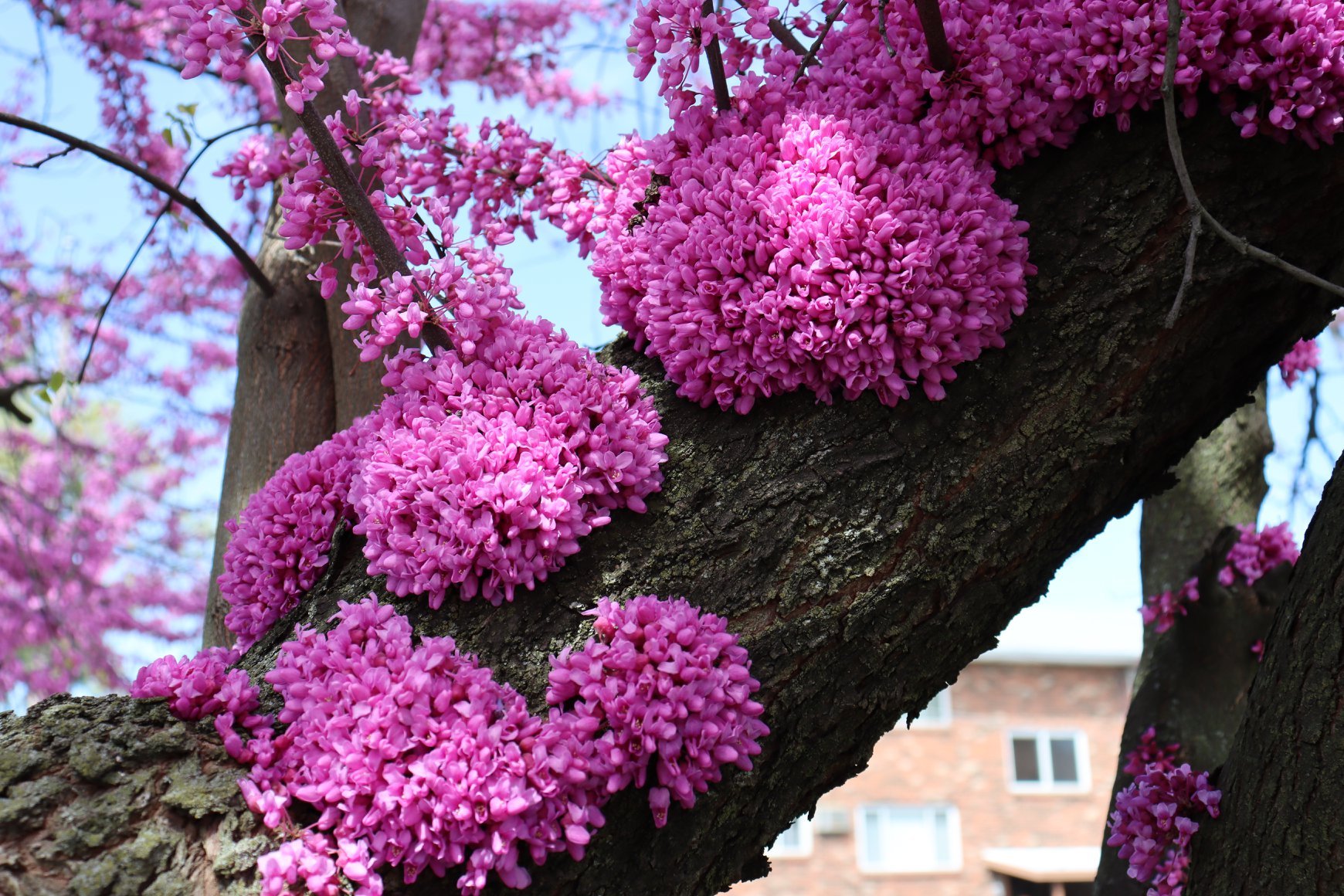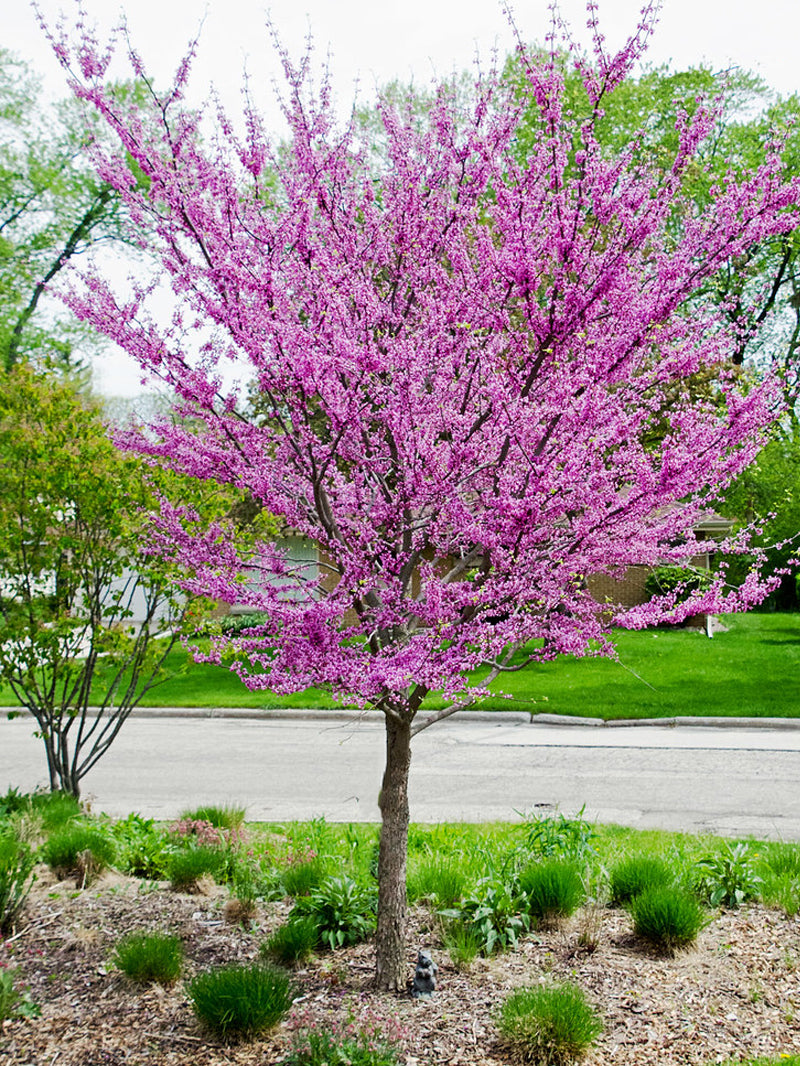A Symphony of Spring: The Eastern Redbud
The Eastern Redbud (Cercis canadensis) is a deciduous tree native to North America, renowned for its stunning display of vibrant pink blossoms that herald the arrival of spring. Its delicate, heart-shaped leaves and graceful form make it a beloved ornamental plant, adding a touch of elegance and color to gardens, parks, and landscapes.
A Botanical Marvel
The Eastern Redbud is a small to medium-sized tree, typically reaching heights of 20-30 feet (6-9 meters) with a similar spread. It features a smooth, gray bark that becomes fissured and ridged with age. One of its most striking characteristics is its unique flowering habit. Unlike most trees that produce flowers after leaves emerge, the Eastern Redbud blooms directly from its branches and trunk, creating a captivating spectacle of pink blossoms against bare wood.

The flowers are small, pea-like, and typically a deep pink color, although variations can exist, ranging from pale pink to magenta. They are arranged in clusters called racemes, which can be up to 4 inches (10 centimeters) long. The delicate petals are often tinged with white or yellow, adding to their visual appeal.
A Seasonal Transformation
As the weather warms, the Eastern Redbud’s heart-shaped leaves begin to emerge, showcasing a vibrant green hue. These leaves are simple, alternate, and have a rounded base with a pointed tip. They provide a lush backdrop for the tree’s stunning blossoms and offer shade during the summer months.
In autumn, the Eastern Redbud undergoes another transformation, as its leaves turn a golden yellow or bronze color before falling to the ground. This seasonal display adds a touch of warmth and beauty to the landscape, creating a picturesque scene.

Ecological Importance
The Eastern Redbud plays an important role in the ecosystem. Its flowers provide a valuable source of nectar and pollen for bees, butterflies, and other pollinators. The tree’s seeds, which are contained in flat, leathery pods, are consumed by various bird and small mammal species. Additionally, the Eastern Redbud’s root system helps to stabilize the soil and prevent erosion.
Cultivation and Care
The Eastern Redbud is a popular ornamental tree that is relatively easy to cultivate. It thrives in a variety of soil conditions, including acidic, neutral, and slightly alkaline soils. It prefers full sun to partial shade and is drought-tolerant once established. Regular pruning can help to maintain the tree’s shape and size, as well as promote healthy growth.

Cultural Significance
The Eastern Redbud has cultural significance in North America. It is the state flower of both Indiana and Kentucky, and it has been associated with various Native American tribes. The tree’s early blooming has made it a symbol of hope and renewal, and its delicate beauty has inspired poets and artists for centuries.
Conclusion
The Eastern Redbud is a captivating tree that offers a stunning display of pink blossoms, vibrant foliage, and ecological benefits. Its unique flowering habit, graceful form, and cultural significance make it a beloved ornamental plant. Whether you are a seasoned gardener or simply appreciate the beauty of nature, the Eastern Redbud is sure to delight and inspire.

:strip_icc()/Star-Jasmine-Bb09HQPpasXBPjzYMW55cV-cae2b5707aa74a3ba328959ad0357284.jpg?w=200&resize=200,112&ssl=1)




